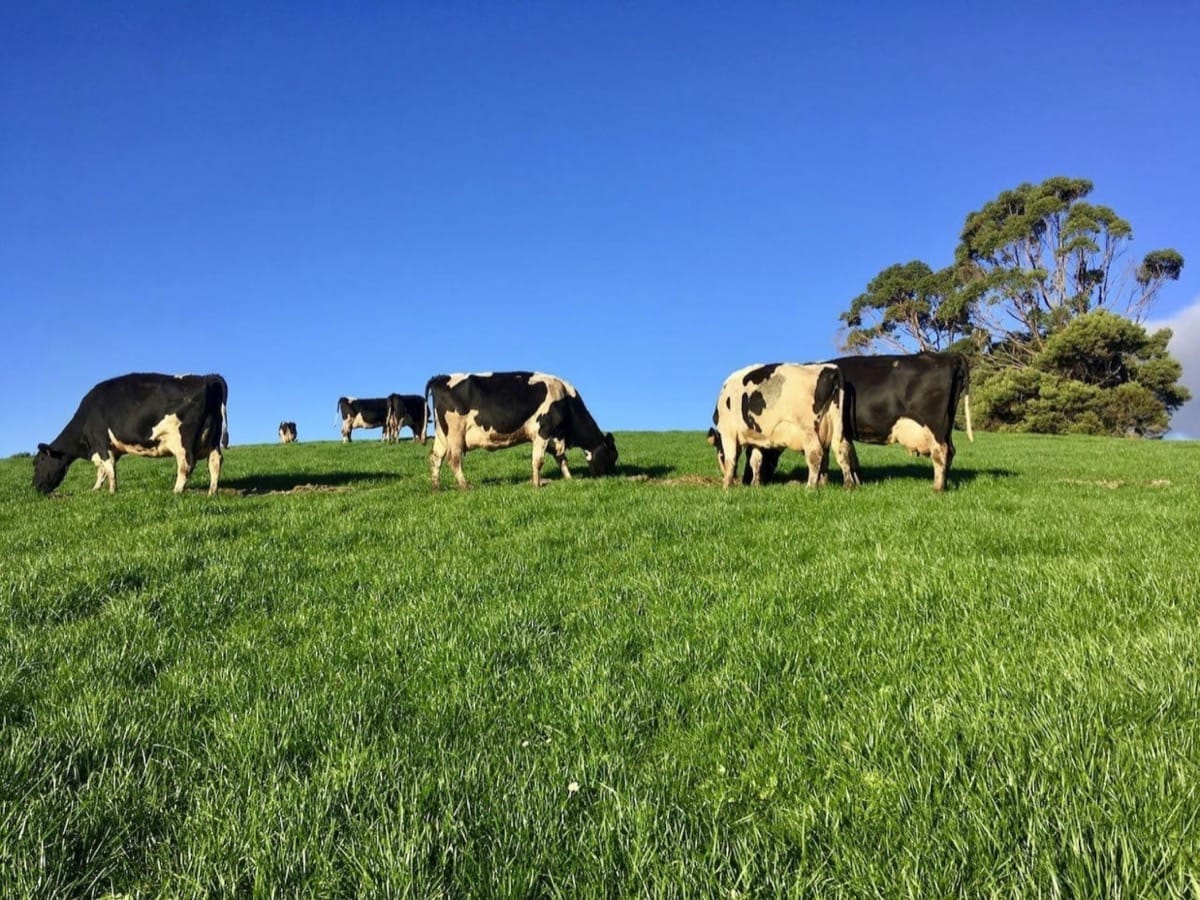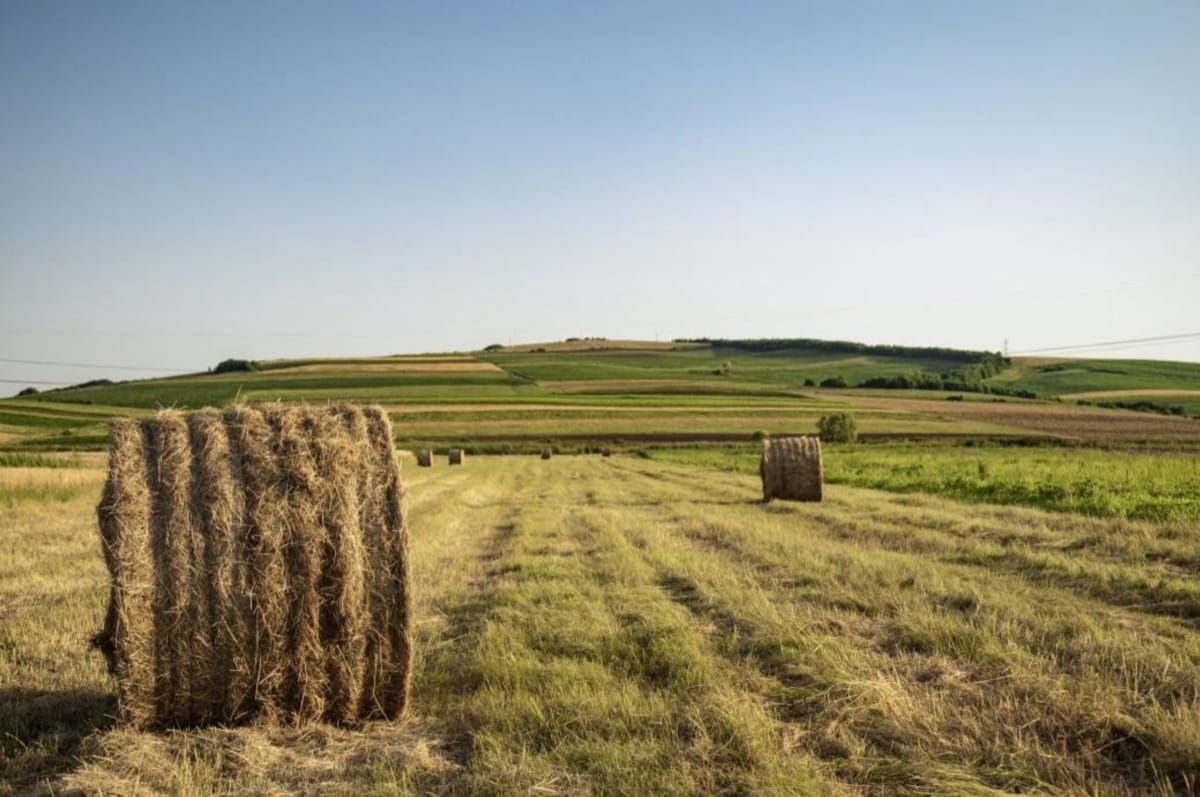Discover a better way to overcome hurdles and foresee trends
As a farmer, you already do a lot. From helping cows give birth, to milking, to managing feed intakes, to addressing on-farm emergencies.
Juggling so many things at once is a lot of work.
So something has to give and more often than not, among other things pasture management takes a backseat.
Maybe you begin by skipping your weekly RPM walks or worse you eyeball pasture growth.
You are no doubt an experienced grazier.
You’ve developed pastures over many grazing seasons and you can easily make several pasture decisions based on your experience and intuition.
But how accurately can you estimate the amount of available forage on your pasture?
Sure, you can slot your pasture paddocks into doing well, doing okay and doing not so well categories.
And maybe you can even gauge how well a particular paddock is performing compared to last year.
But can you eyeball the exact change in DM yields?
Can you eyeball pasture growth rates over a 60 day period?
And can you remember your observations after a few days?
In this article, let’s look at two aspects of pasture management.
First, let’s see how grass measurement can help you earn more profits.
Second, let’s also see how eyeballing pasture growth prevents you from earning more profits.
Is Pasture Measurement Worth It?
Let’s begin by answering the most obvious question first.
Why bother measuring pastures?
I’ll answer this with a few facts.
Fact #1: Pastures are cheap:
According to the feed database of USDA, in 2019-20, here are the cost prices of a few commonly used animal feed types:
Table 1: Common animal feed types and their costs per ton.
| Feed Type | Cost ($/ ton) |
|---|---|
| Barley | $151.5 |
| Corn Silage | $141.7 |
| Soybean | $307.9 |
| Distiller Dried Grain | $145.9 |
| Hay | $132.0 |
| Pasture | $106.2 est. |
Clearly, hay and pastures are your cheapest feed options.
Yes, commercial feeds can be slightly cheaper than hay, but we both know that those feeds have a lot of filler material in them.
And we haven’t yet considered transportation costs, have we?
More importantly, we’ve only considered the cost price of hay as a baseline.
When you grow your own pasture, the cost of producing it would be even lesser.
According to researchers from Iowa State University, the total costs of maintaining a productive pasture is around 170 dollars per acre per year (Table 4, page 5).
Since an acre can yield more than 1.6 tons of pasture, we estimate that the production costs for a ton of pasture would be around 106.2 dollars.

Fact #2: Pastures are nutritious:
But what about nutritional values?
After all lower costs should not mean lower quality. Here are a few well-known numbers that can help you compare different feed types:
Table 2: Common animal feed types and their %DM, %TDN values
| Feed Type | % DM | % TDN |
|---|---|---|
| Barley | 89% | 84% |
| Corn Silage | 89% | 72% |
| Soybean | 91% | 77% |
| Distiller Dried Grain | 91% | 91% |
| Hay | 88% | 58% to 71% |
| Pasture | 25% to 71% | 20% to 50% |
DM represents the average dry matter content as a percentage of the total feed weight.
This is important because moisture content doesn’t translate into nutrition. So DM values give you more accurate nutritional intake values.
TDN represents the total digestible nutrients, available in a particular type of feed. More accurately, it is the sum of digestible fibre, protein, lipid, and carbohydrates.
Like DM, TDN is also expressed as a percentage of the total feed weight.
As you can see from the above table, hay and pastures have a wide range of DM and TDN values.
Because unlike the other grains and mixes, pastures are live plants that are still growing.
This means that it will have a lot more moisture than harvested grain or even dried out hay. This also means that pastures might have lower TDN values depending upon the type of pasture species and season.
However, improved pasture species such as alfalfa, fescue and ryegrass all have high enough DM and TDN values to make them competitive enough, even when compared to more nutrient dense grains.

Fact #3: Pastures are profitable:
I’m sure that you can see how lower feed costs can help you earn more profits.
Stojanović et al noted that grazed forage is the cheapest source of nutrients. Geoffrey Benson has found clear evidence of higher profit margins per cow and per unit of milk sold for pasture-based farms.
However, the opportunity doesn’t end there.
In addition to lowering your feed costs, through effective pasture management, you could also significantly improve dry matter yields and production.
Our own customers have managed to earn more than 60,000 dollars in additional profits every year.
How?
That comes next.
The Disadvantages of Eyeballing Pasture Growth
Effective pasture management is the art of maximizing dry matter yields and production outcomes.
To maximize dry matter yields, you need to manage your pastures for optimum regrowth. And maximum regrowth happens in a particular range.
The pasture plants shouldn’t be too small, where a grazing event can damage its roots. Nor should it be big, mature and well into its seeding stage.
Just like how humans achieve their maximum growth between 5 and 15 years, pasture plants also achieve maximum growth between the above two phases.
Even better, when grazed during this stage, they regrow equally fast.
But how do we ensure that our pastures remain in this active growth – regrowth stage?
The answer is of course through effective grazing and pasture management. By using pre-grazing and post-grazing pasture measurements.
But why use these pasture growth measurements?
What advantages does it offer over say eyeballing pasture growth?
I can think of three key advantages:
First, measuring pastures regularly can help you spot small differences. In other words, the human eye cannot spot pasture yield differences of 100, 200 or even 300 kg DM/ ha.
Yet these small differences can make all the difference for your animals. It could mean that either your animals get just enough nutrition to survive or it gets enough to thrive.
Secondly, because the human eye is unable to spot small differences and remember pasture growth patterns on your farm over a long period of time, you miss out on crucial opportunities to make the necessary adjustments.
You could say, lose out on an opportunity to irrigate or fertilize your pasture that in turn could lead to a significant yield increase.
Thirdly, accurate data has the ability to cut through personal biases, opinions and beliefs. You and me, both have the tendency to see what we want to see and to believe what we want to believe. Data on the hand is impartial. And can help us see the reality as it is.
But even more importantly, accurate pasture growth data can help you earn more profits.
McCarthy et al estimate that livestock farmers typically graze at least half their paddocks, too soon.
Chapman et al went one step further and estimated that grazing too early and not achieving target residuals, costs farmers around 600 dollars per hectare, every growing season.
Let me put it to you another way?
Would you pay an extra 10,000 dollars for your feed?
Would you leave out 20,000 dollars of milk to go waste?
Probably not, right?
Yet, livestock farmers routinely leave out anywhere between 385 to 600 dollars per hectare, every year, due to ineffective pasture management.
Even on a small 200-hectare farm, this adds up to unrealized revenues worth between 77,000 and 120,000 dollars, every year.
My question is why are you okay with leaving out this money alone?

Cost-effective Pasture Growth Data:
Maybe you’re too busy to measure your pasture, every week?
Maybe you can’t afford to spend about 6,000 dollars a year in labour costs alone to measure your pasture?
Maybe you don’t want to invest thousands of dollars into a C-Dax, farmote or drone?
Or maybe you thought that eyeballing was your best alternative, at least until now?
At least until you found that pasture.io can give you accurate and automatic pasture growth measurements, several times a week, right on your smartphone or computer, for 8 dollars a hectare per year plus a flat annual fee of 1,099 dollars.
Thirty years ago farmers took pasture measurements with an inch-tape and maintained log charts.
Ten years ago, they used RPMs and C-Dax meters and analyzed their results with spreadsheets.
Today you don’t have to do any of this.
Advanced technology has made managing pastures easier than ever before.
It also automatically helps you with all the number-crunching needed to help you take effective grazing decisions, every day. So that you can focus more on improving your productivity and profits!
That brings us to the end. I trust this was useful to you.
If you’re interested to learn more about earning additional profits from your pasture, consider downloading this free e-book now.
Happy Farming
- The Dedicated Team of Pasture.io, 2020-09-09